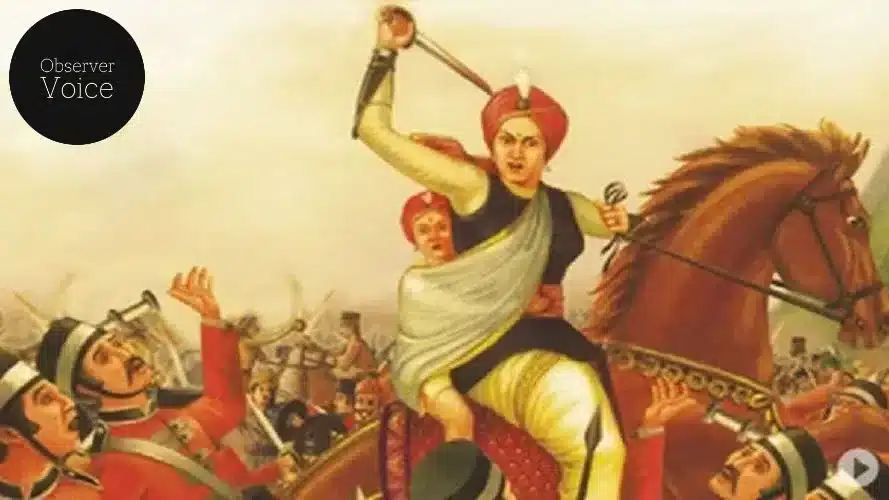Rani Lakshmi Bai: The Warrior Queen of Jhansi and Symbol of Indian Resistance

Rani Lakshmi Bai (19 November 1828 — 17 June 1858) the queen of Jhansi was one of the leading figures of the Rebellion of 1857. For Indian nationalists, she became an icon for the freedom struggle against the British Raj.
Early Life
Rani Lakshmi Bai was born on 19 November 1828 in the town of Varanasi. She was the daughter of a Brahman who worked as an adviser to the court of the Peshwa, or prime minister, of the Maratha Empire, Baji Rao II. Though not aristocratic, Brahmans belonged to a higher caste of priests and scholars. When She was four, her mother died, and she moved to court with her father. The Peshwa raised her like his own; she received an education unlike most girls and trained with the boys in martial arts, fencing, and riding.
In 1842, She got married Gangadhar Rao Newalkar, the Maharaja of Jhansi, and got the name of Rani Lakshmibai. Lakshmi bai and Gangadhar Rao adopted Rao’s cousin’s son, Anand Rao, who was later renamed Damodar. Soon after they adopted Anand, Maharaja died due to an illness in 1853. She was just 18 at that time. Lord Dalhousie, the British governor-general of India, refused to recognize the adopted heir and annexed Jhansi in accordance with the doctrine of lapse. An agent of the East India Company was posted in the small kingdom to look after administrative matters.
The 22-year-old queen refused to cede Jhansi to the British. Shortly after the beginning of the mutiny in 1857, which broke out in Meerut, Lakshmi Bai was proclaimed the regent of Jhansi, and she ruled on behalf of the minor heir. Joining the uprising against the British, she rapidly organized her troops and assumed charge of the rebels in the Bundelkhand region. Mutineers in the neighboring areas headed toward Jhansi to offer her support.
Death and Burial
Under Gen. Hugh Rose, the East India Company’s forces had begun their counteroffensive in Bundelkhand by January 1858. Advancing from Mhow, Rose captured Saugor (now Sagar) in February and then turned toward Jhansi in March. The company’s forces surrounded the fort of Jhansi, and a fierce battle raged. Offering stiff resistance to the invading forces, Lakshmi Bai did not surrender even after her troops were overwhelmed and the rescuing army of Tantia Tope, another rebel leader, was defeated at the Battle of Betwa. Lakshmi Bai managed to escape from the fort with a small force of palace guards and headed eastward, where other rebels joined her.
Tantia Tope and Lakshmi Bai then mounted a successful assault on the city fortress of Gwalior. The treasury and the arsenal were seized, and Nana Sahib, a prominent leader, was proclaimed as the Peshwa (ruler). After taking Gwalior, Lakshmi Bai marched east to Morar to confront a British counterattack led by Rose. Dressed as a man, she fought a fierce battle and was killed in combat. She died on 17 June 1958 in Kotah-ki-Serai near the Phool Bagh of Gwalior.
Her palace, the Rani Mahal, has now been converted into a museum. It houses a collection of archaeological remains of the period between the 9th and 12th centuries AD.
Read More: 19 November: Remembering Keshav Chandra Sen on his Birth Anniversary
Observer Voice is the one stop site for National, International news, Sports, Editor’s Choice, Art/culture contents, Quotes and much more. We also cover historical contents. Historical contents includes World History, Indian History, and what happened today. The website also covers Entertainment across the India and World.

